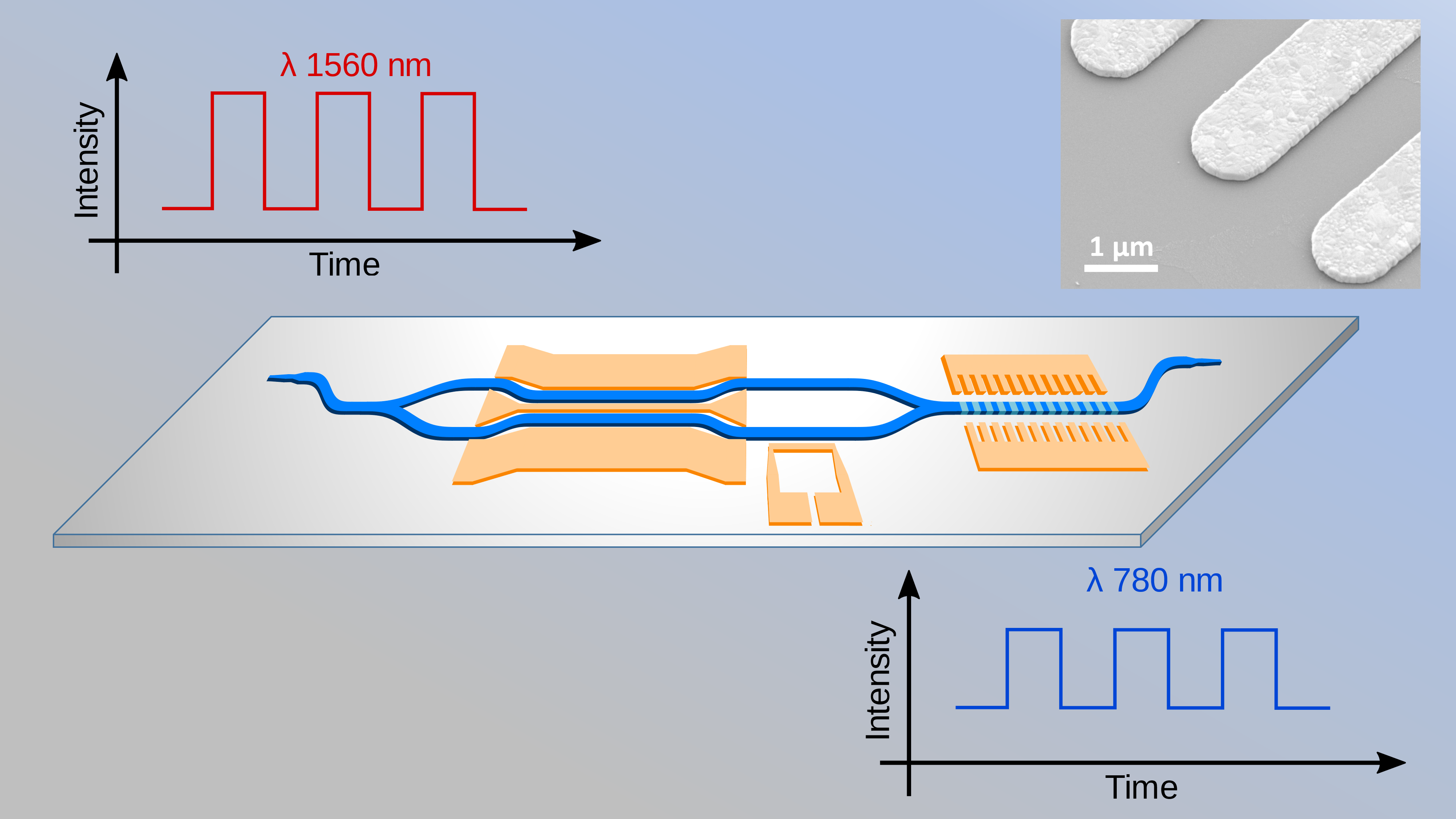The modulation of cold atom experiments currently uses bulky laser sources, wavelength converters and electro- or acousto-optic modulators to achieve high power and large extinction ratio at wavelengths close to the visible range. Here, we propose to exploit the lithium niobate-on-insulator (LNOI) platform to integrate an electro-optic modulator (EOM) with a periodically poled lithium niobate (PPLN) building block on the same photonic chip to maximize the available power and modulation depth. First, we will fabricate an EOM in the C-band based on the Mach-Zehnder design while keeping a low power consumption and high modulation depth with CMOS-compatible voltages (<5 V) based on our expertise with LNOI Bragg modulators at 100 GHz at ETHZ [Pohl et al., IEEE Phot. Tech. Lett., 33, 2, 2021.]. The PPLN design will be simulated to define the periodicity of the poled region and to target single-mode operation for the up-converted light at 780 nm. The high-speed EOM consolidates microwave photonics beyond the Ka band, setting a standard for space communications. The EOM has an electrical bandwidth exceeding 56 GHz. Therefore, non-return-to-zero (NRZ) format can be used and requires less digital signal processing than silicon photonics with high-order pulse-amplitude modulation schemes (PAM4 or PAM8) to transmit 100 Gbit/s. Furthermore, by combining PPLN with EOM on the same platform, we foresee the miniaturization of self-referenced optical frequency combs and the possibility of creating an integrated dual-wavelength laser source. The PPLN with EOM approach requests two components and seems not as straightforward as directly implementing an EOM in the visible range (see another idea that we proposed recently: I-2021-02060, High-speed integrated electro-optic modulator for the visible range). However, it maximizes the conversion efficiency and results in higher output powers than without the PPLN, which is crucially needed for cold atom applications.

